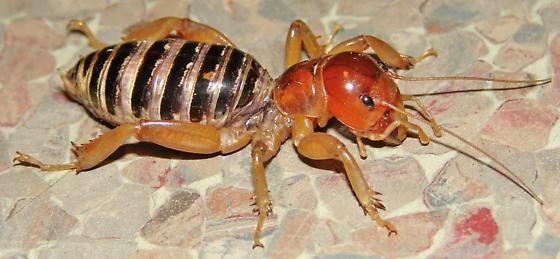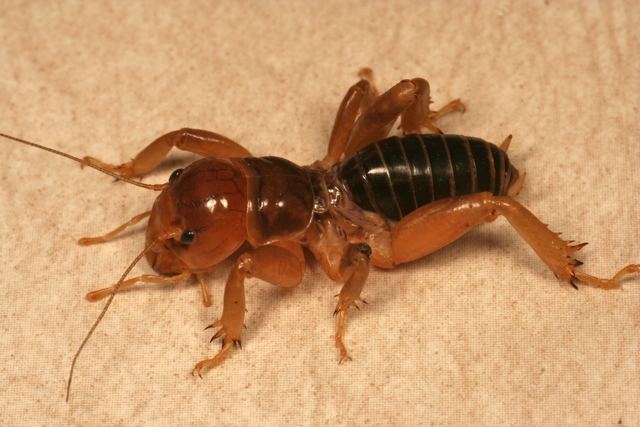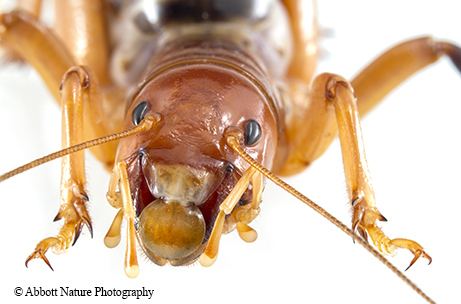Kingdom Animalia Scientific name Stenopelmatus Phylum Arthropod | Family Stenopelmatidae | |
 | ||
Lower classifications Stenopelmatus nigrocapitatus, Stenopelmatus Navajo | ||
Jerusalem cricket aka potato bug
Jerusalem crickets are a group of large, flightless insects of the genus Stenopelmatus. They are native to the western United States and parts of Mexico. Its large head has inspired both Native American and Spanish names.
Contents
- Jerusalem cricket aka potato bug
- Potato bug aka jerusalem cricket
- Classification
- Communication
- Names
- References

Despite their common name, Jerusalem crickets are not true crickets, as they belong to the family Stenopelmatidae, while true crickets belong to the family Gryllidae; nor are they native to Jerusalem. These nocturnal insects use their strong mandibles to feed primarily on dead organic matter but can also eat other insects. Their highly adapted feet are used for burrowing beneath moist soil to feed on decaying root plants and tubers.

While Jerusalem crickets are not venomous, they can emit a foul smell and are capable of inflicting a painful bite.

Potato bug aka jerusalem cricket
Classification

There are a number of other genera in the same superfamily (Stenopelmatoidea) in Australia and New Zealand. These are the weta and king crickets. They are similar to Stenopelmatus in many respects. The family Stenopelmatidae contains several genera in addition to Stenopelmatus, but only the genera in the subfamily Stenopelmatinae (all New World) are referred to as Jerusalem crickets.
Communication
Similar to true crickets, each Species of Jerusalem cricket produces a different song during mating. This song takes the form of a characteristic drumming in which the insect beats its abdomen against the ground.
No species have wings with sound-producing structures; moreover, evidently none has structures it could use to hear sound. This contrasts with true crickets and katydids, who use their wings to produce sounds and have hearing organs to sense sounds of others. Jerusalem crickets also seem unable to hiss by forcing air through their spiracles, as some beetles and cockroaches do. Instead, the few Jerusalem crickets that do make sound rub their hind legs against the sides of the abdomen, producing a rasping, hissing noise. This hiss may serve to deter predators rather than to communicate with other crickets. For such purposes, Jerusalem crickets rely on substrate vibrations felt by subgenual organs located in all six of the insect's legs.
Names
Several hypotheses attempt to explain the origin of the term "Jerusalem cricket". One suggests the term originated from a mixing of Navajo and Christian terminology, resulting from the strong connection Franciscan priests had with the Navajos in developing their dictionary and vocabulary. Such priests may have heard the Navajos speak of a "skull insect" and took this as a reference to Calvary (also known as Skull Hill) outside Jerusalem near the place where Jesus was crucified.
Several Navajo names refer to the insect's head:
Other names include the Hopi qalatötö ("shiny bug"), the Spanish niño de la tierra ("earth child") and cara de niño ("child's face").
Also known in some places in the U.S. - a potato bug.
